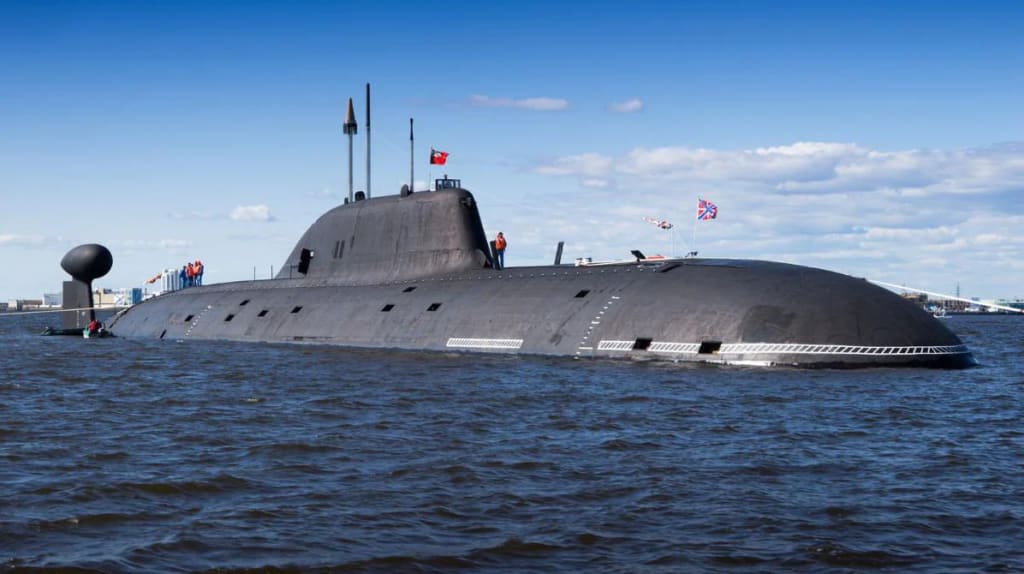Nuclear-Powered Submarines: The Advantages and Disadvantages of Nuclear Energy in Underwater Vessels
Exploring the Pros and Cons of Nuclear-Powered Submarines and the Potential Implications for Military and Environmental Concerns

Since the launch of the first nuclear-powered submarine, USS Nautilus, in 1954, nuclear energy has become a primary source of power for modern submarines. The use of nuclear energy in submarines has many advantages, including increased endurance, speed, and stealth capabilities. However, nuclear power also has several disadvantages, including safety concerns and environmental impacts. This article explores the pros and cons of nuclear-powered submarines and their potential implications for military and environmental concerns.
Advantages of Nuclear-Powered Submarines:
One of the most significant advantages of nuclear-powered submarines is their increased endurance. Unlike traditional diesel-electric submarines, which rely on battery power and must surface frequently to recharge, nuclear-powered submarines can remain submerged for months at a time. This increased endurance allows nuclear-powered submarines to undertake longer and more complex missions, making them a critical asset for naval forces.
Another advantage of nuclear-powered submarines is their increased speed. Nuclear reactors can produce a vast amount of energy, which can be converted into motion through the use of a turbine. As a result, nuclear-powered submarines can travel faster than diesel-electric submarines, which rely on electric motors. The increased speed of nuclear-powered submarines allows them to move quickly between locations, making them a valuable asset for rapid response missions.
Nuclear-powered submarines also have greater stealth capabilities than diesel-electric submarines. Diesel-electric submarines must surface periodically to recharge their batteries, making them vulnerable to detection by radar or sonar. Nuclear-powered submarines, on the other hand, can remain submerged for extended periods, reducing their chances of detection. Additionally, nuclear-powered submarines produce less noise than diesel-electric submarines, making them harder to detect by passive sonar.
Disadvantages of Nuclear-Powered Submarines:
Despite their advantages, nuclear-powered submarines also have several significant disadvantages. One of the most significant concerns is safety. Nuclear reactors are incredibly complex machines that require careful maintenance and monitoring to operate safely. If something goes wrong, such as a reactor coolant leak or a failure in the control system, a nuclear accident could occur, leading to a potentially catastrophic release of radiation. While the likelihood of such an event is relatively low, the consequences of a nuclear accident in a submarine could be severe, both for the crew and the environment.
Another significant disadvantage of nuclear-powered submarines is their environmental impact. While nuclear energy produces fewer greenhouse gas emissions than fossil fuels, the production and disposal of nuclear waste are highly problematic. Nuclear reactors produce radioactive waste that can remain hazardous for thousands of years. The disposal of this waste poses significant challenges, as it must be stored securely to prevent leaks and contamination of the surrounding environment.
Implications for Military and Environmental Concerns:
The use of nuclear-powered submarines has significant implications for both military and environmental concerns. On the one hand, nuclear-powered submarines provide naval forces with increased endurance, speed, and stealth capabilities. This makes them a valuable asset for defense and deterrence, as well as for conducting reconnaissance and intelligence-gathering missions.
On the other hand, nuclear-powered submarines also pose significant environmental risks. The production and disposal of nuclear waste are highly problematic, and the consequences of a nuclear accident could be catastrophic. Additionally, the deployment of nuclear-powered submarines could exacerbate existing tensions between nations and increase the likelihood of nuclear conflict.
Conclusion:
In conclusion, the use of nuclear energy in submarines has both advantages and disadvantages. While nuclear-powered submarines offer increased endurance, speed, and stealth capabilities, they also pose significant safety and environmental risks. As the world becomes increasingly concerned with environmental issues and nuclear proliferation,it is essential to weigh the benefits and drawbacks of nuclear-powered submarines carefully. Additionally, the cost of building and maintaining nuclear-powered submarines is significant, making them an investment that requires careful consideration.
While nuclear-powered submarines remain a valuable asset for naval forces, it is essential to continue to explore alternative energy sources that are safer and more environmentally friendly. For example, hydrogen fuel cells are a promising alternative that could potentially provide similar benefits to nuclear power without the associated risks.
In conclusion, the use of nuclear-powered submarines is a complex issue that requires careful consideration of the benefits and drawbacks. While nuclear energy provides increased endurance, speed, and stealth capabilities, it also poses significant safety and environmental risks. As we continue to explore alternative energy sources, it is crucial to maintain a cautious approach to the use of nuclear power in submarines and to prioritize safety and environmental concerns.
About the Creator
Aadhi Penten
With a love for exploring the world and a passion for sharing my experiences through words, my articles is a window into my life and a source of inspiration for those seeking adventure. From travel tips to personal stories
Enjoyed the story? Support the Creator.
Subscribe for free to receive all their stories in your feed. You could also pledge your support or give them a one-off tip, letting them know you appreciate their work.






Comments
There are no comments for this story
Be the first to respond and start the conversation.